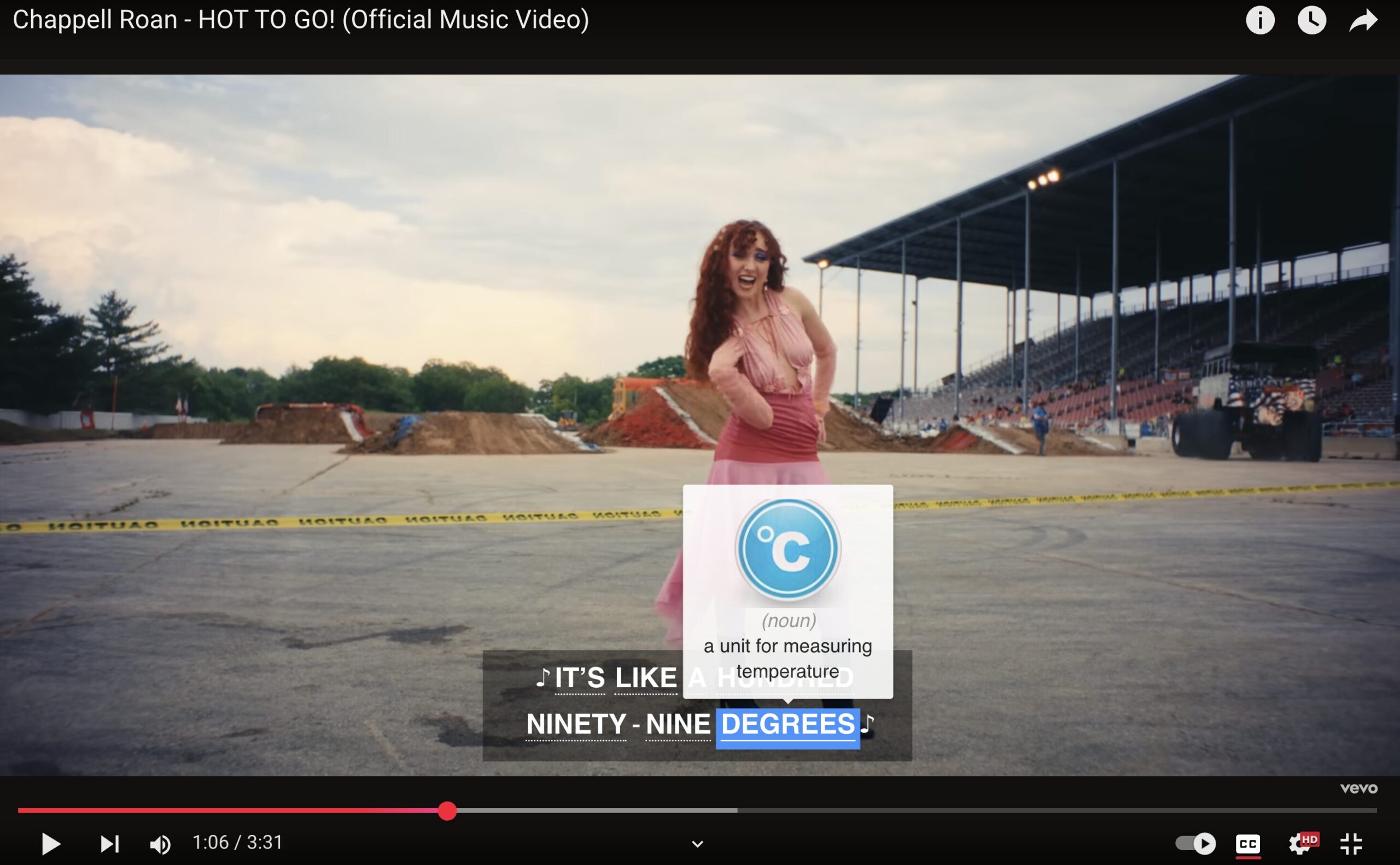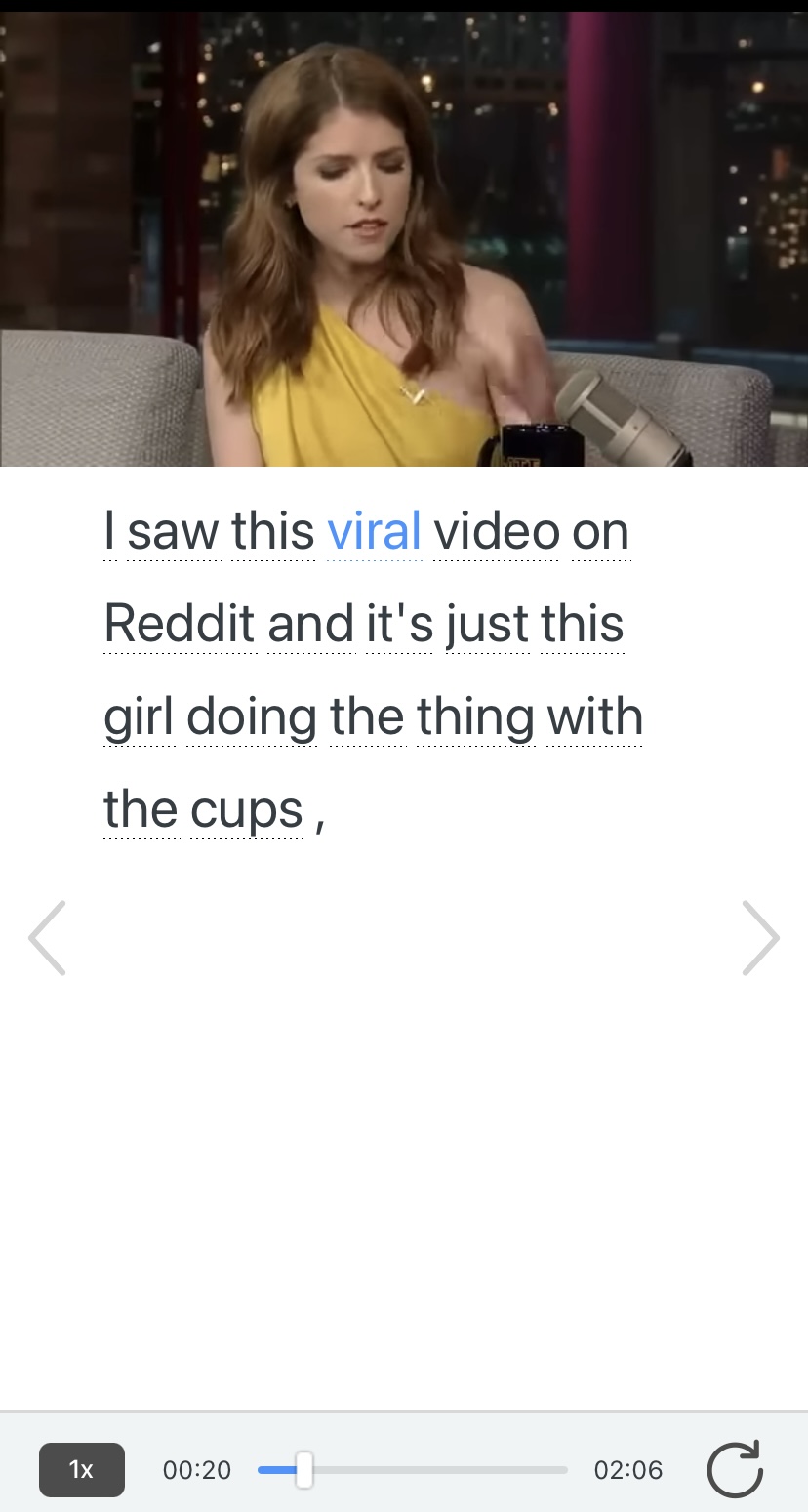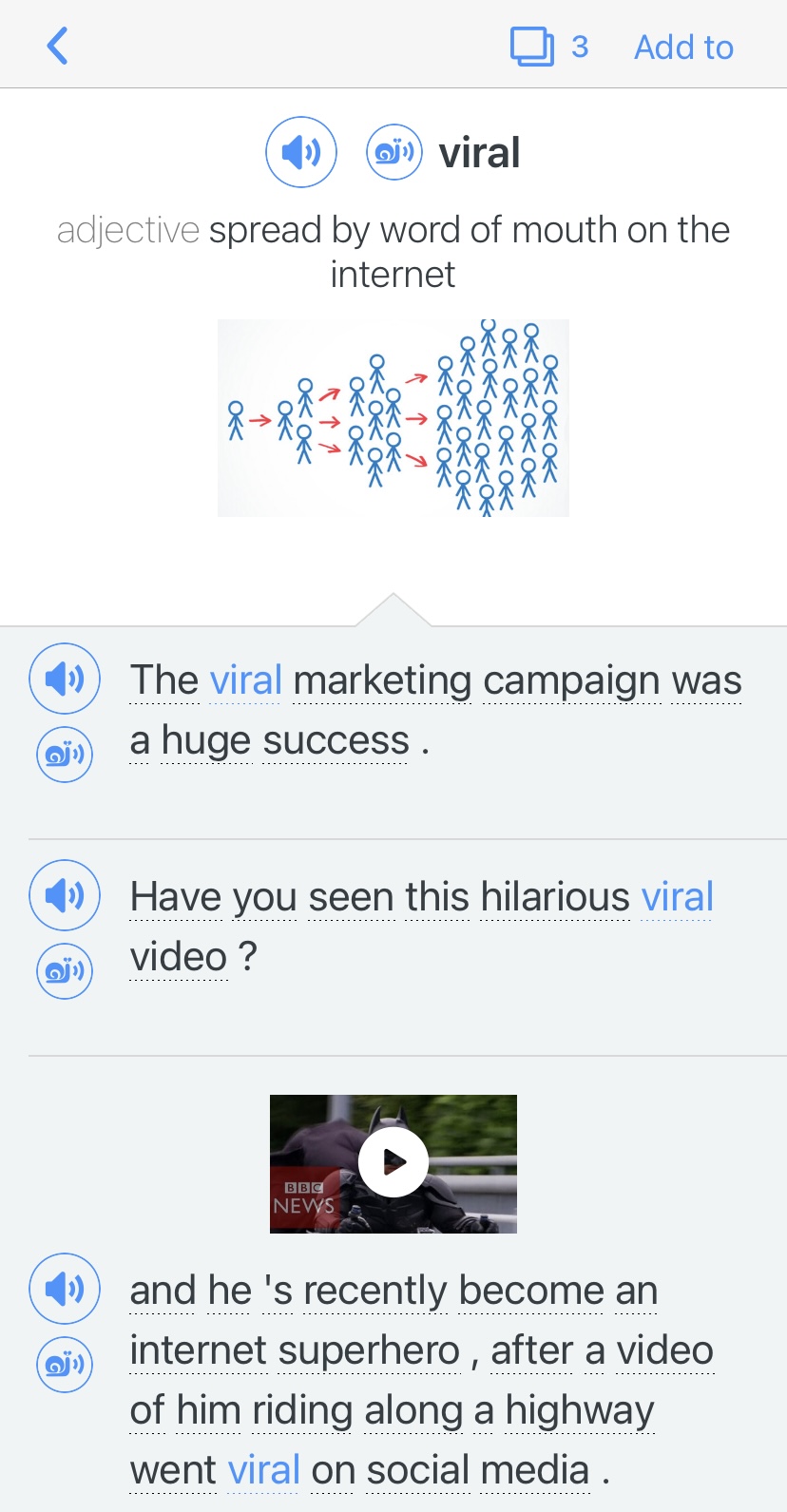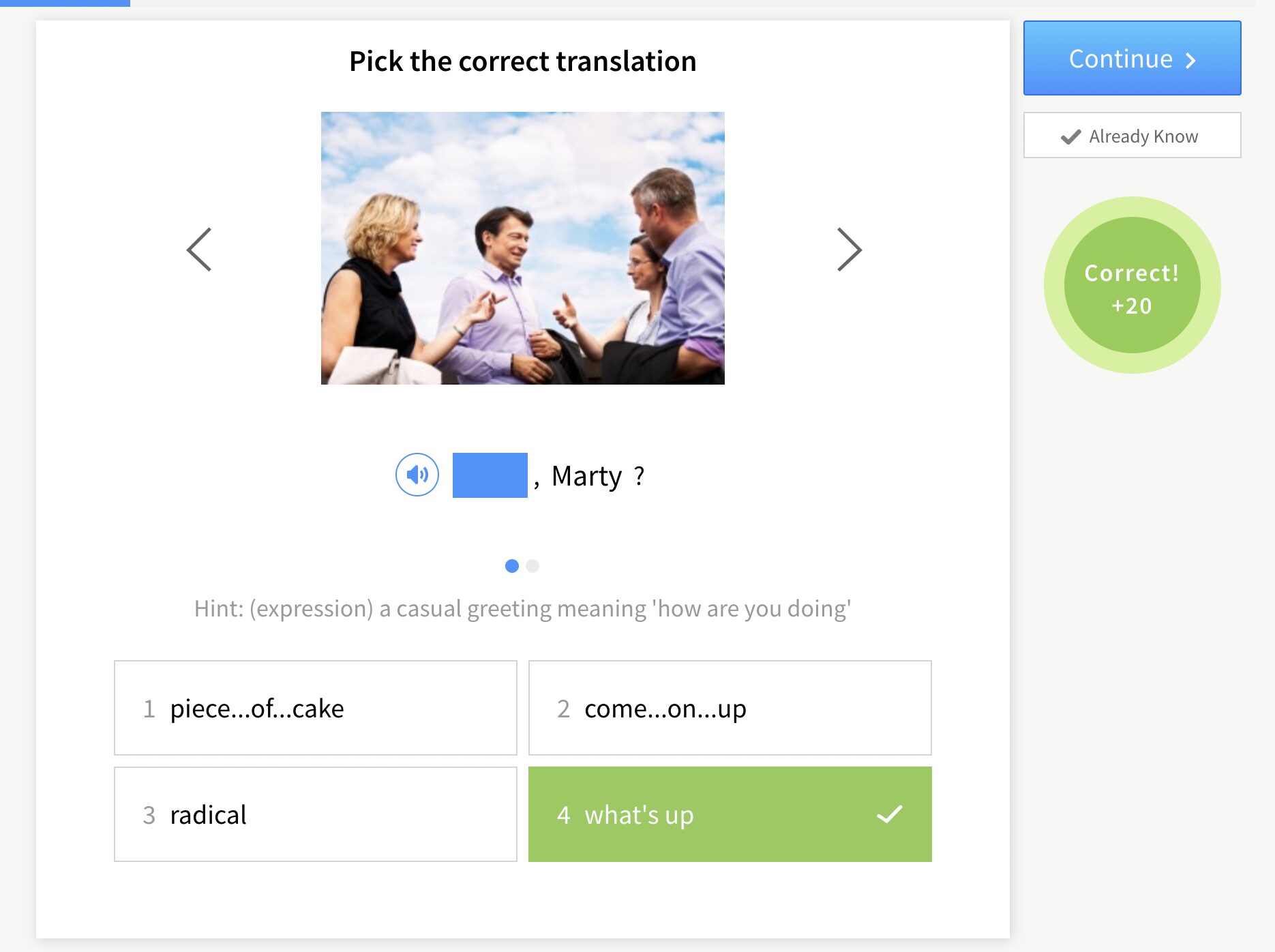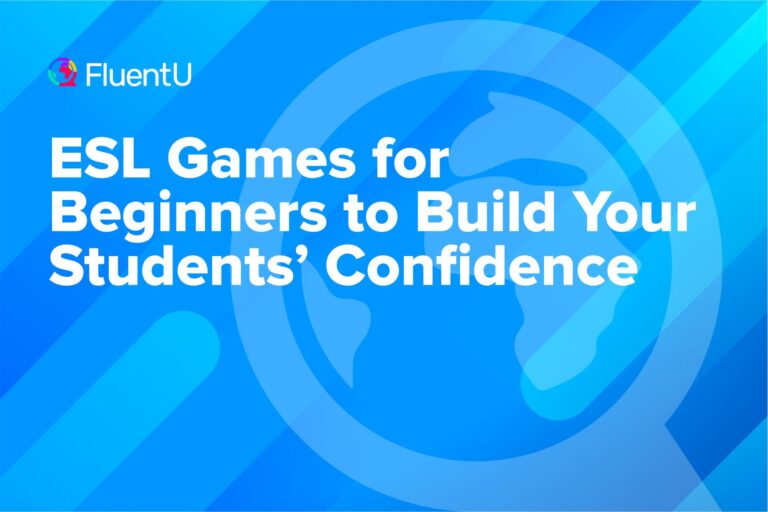10 ESL Song Activities
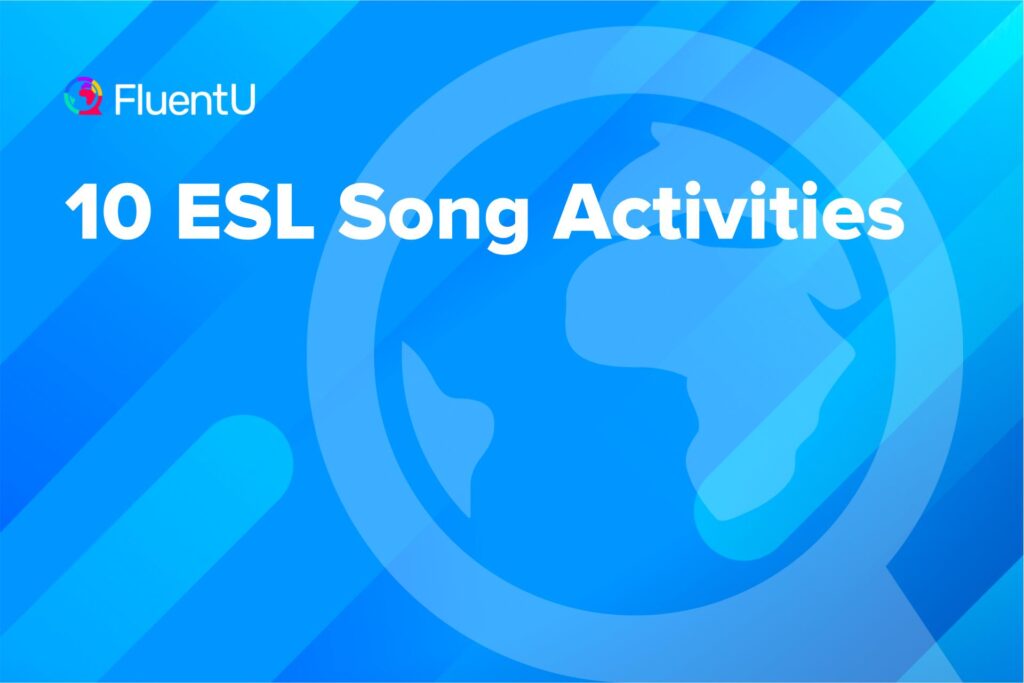
Almost everyone loves music, so you should consider using songs and music as the basis for new ESL song activities. Because many popular songs tend to be pretty simple in terms of lyrics, using them can work for any level of ESL student—even beginners.
Check out this list of ideas for ESL song activities here. I’ve included ten activities, recommended songs to use and how you can choose your own songs for your classroom.
Download: This blog post is available as a convenient and portable PDF that you can take anywhere. Click here to get a copy. (Download)
Song Activities for Listening
Active listening and writing
Start by playing the song without showing students any of the words. Have them simply listen to try to understand as much as they can on their own. To encourage active listening, have them write down:
- Phrases that they recognize.
- Words that they don’t know the meaning of.
- A couple of sentences to summarize the song’s main idea.
If your students are beginners, they may need to listen to the song a couple of times to accomplish this. By writing down key words and phrases, your students can test themselves and see how they did compared to the actual lyrics. You can then discuss the song with your students and ask them what they understood and see what questions they have.
Readalong
Next, you can play the song while showing your students the lyrics. This can be accomplished either by playing the song as a lyric video on YouTube or by printing out the lyrics from a website like AZLyrics.
You can then discuss the results with your students. How did they do? Did they understand the meaning of the song? Were there any words that surprised them? What was clarified after they saw the lyrics?
Feel free to play the song with the lyrics a couple of times so that their ears can begin to recognize the words as performed by natives. Songs can be difficult to understand, but by allowing students to concurrently see and hear the words, they will learn how to recognize those phrases aurally.
Song Activities for Vocab and Grammar
Fill in the blank
Prepare a worksheet for your students using song lyrics with key words removed so that they will have to fill in the blanks. Remove important vocabulary words, verbs and/or prepositions. For beginner students, you can make a word bank at the top so that they can see how to spell the words rather than having to generate the words on their own.
See how many blanks they can fill in on their own, and then play the song so that they can check their work. Are there any words that they still can’t understand? Make sure students know the meaning of all new words and understand how they are used in the song. You can then have students practice these key words by writing a few of their own sentences with them.
Slang practice
Songs are a great way to introduce useful slang expressions that are a lot of fun for students to learn. Prior to the lesson, pick out several slang phrases from the song that you wish to teach your students.
To introduce a phrase, have them first try to infer its meaning based on the context in the song. You can then explain its exact meaning and give a couple of examples of how you might use the phrase.
Then have students practice these phrases with a partner, making a short conversation where they include as many of the new slang words as possible. You could even have them write their dialogue down on paper and then read it in front of the class to practice speaking and listening.
Song Activities for Pronunciation
Phrase practice
This is a very important activity because it can make a huge difference in students’ confidence when speaking English. Pick out key words, phrases and slang from a song you have played for your students to work on for pronunciation. Then say each word or phrase and have students repeat after you.
Pay special attention to problematic syllables and sounds. Depending on your students’ native language, they will struggle with different aspects of English pronunciation. These are the areas to really hone in on.
Don’t simply have them repeat the word and then move on; instead, critique their pronunciation and even explain how they can sound more like you. This may require communicating exactly how your mouth and tongue are forming the word. Have students practice the specific sounds they are struggling with. Make sure they are using appropriate intonation and placing emphasis on the correct syllable.
Have them imitate all aspects of your speech and keep working with them until they can say those key words like a native. When they get the hang of it, you can even introduce different English accents, like American, British and Australian!
Singalong
Have your students put their pronunciation skills to the test by singing along to the song. No song lesson is complete without a singalong! Your students should strive to sound as much like the singer as possible, which, depending on the singer, can be a pretty amusing exercise. This means paying attention to the pitch and rhythm of the song, as well as the pronunciation of each word.
The many parallels between language and music really come into play here. Since the chorus repeats itself several times, this is a great way to learn new vocabulary through repetition and commit words to memory.
Sing along as a class and see if there are any brave souls who would like to sing the chorus solo. Split students into groups and have different groups of students sing different parts of the song for an added challenge.
Song Activities for Teaching Culture
Summarize the song
Songs provide great insight about their culture of origin. Some songs are even about specific locations or cultural phenomena. Even a more generic song often speaks profoundly about the worldview of that region.
To glean these insights, have students summarize the main idea of the song either by writing a few sentences about it or having a class discussion about the song’s theme.
Do students like the message of the song? How is it similar or different from their own culture? Are there specific experiences they have had that relate to the lyrics of the song?
If there are any cultural elements of the song that are particularly foreign to your students, take the time to explain them. This is a good time to show students the music video of the song so that they can see the culture that it takes place in.
Rewrite the lyrics
This is a fun challenge to test your students’ songwriting abilities! Put students in small groups and challenge them to rewrite the lyrics using the melody of the song, but changing the words. This is a good opportunity to incorporate other cultural themes or vocabulary into the lesson even if the song isn’t directly applicable.
You can give each group a specific topic or key words that the new lyrics should include. For beginner students, this will be challenging, so you can have them just rewrite the chorus. For more advanced students, you can give one verse of the song to each group so that the entire song is complete but each group is only responsible for one part. Then have each group sing their part to the class.
Many songs have an instrumental or karaoke version on YouTube to sing along to.
Song Games
Lyric challenge
This is a fun memory game that can help students learn the song’s vocabulary. It is a good activity to do after you have already been working with a song for a little while so that students are familiar with the lyrics.
Students will sit in a circle and take turns saying one of the lines of the song. Each student needs to contribute a new lyric, and if they can’t remember any, then that student is out and it goes to the next student. You can check off the lyrics as they name them to keep track of what has been said. Eventually, there will only be one student left and that student is the winner.
Alternately, you can challenge students to memorize the song, and then go around in a circle and have each student say the next lyric in order, attempting to go through the entire song. Any student who doesn’t know the next lyric is out, and the next student has to come up with it. The last student left is the winner!
Song skits
This activity is a good way to make sure students truly understand the different phrases and vocabulary of the song by using them in real-world communication scenarios. It’s a good final activity because it challenges students’ writing, comprehension and speaking abilities. You will choose specific vocabulary words, verbs and phrases from the song for your students to incorporate into a skit.
Alternately, if your song does not use a lot of commonly spoken vocabulary, you can have your students write a short story instead of a conversation. Divide students into small groups and have them write a short script that incorporates the key words. Beginners can make a simple skit out of a few key words; advanced students can make an elaborate skit with many key words.
Have them perform their skits for the class once they are complete. Look over their skits before they perform to make sure they are using the words properly.
Top Song Choices for ESL Activities
A good song choice varies widely depending on the level of your students and the subject matter of your lesson. Visit this post to see a list of songs for teaching ESL students of different levels, and check out these suggestions to get started:
Beginner
For beginner students, you will want a song that uses simple vocabulary words, present tense verbs and clear pronunciation by the singer.
- “The Good Life” by Three Days Grace has very simple sentence structure and would be a good way to introduce “I want” and “I need” phrases. You could also practice making sentences using “I know” and “I don’t know.” You could even try a classroom discussion on what makes a good life.
- “Feeling Good” by Nina Simone is another good song for beginners. It has a lot of basic nature vocabulary words and would also be a good way to teach “I feel” phrases.
- “New York State of Mind” by Billy Joel is a great song for beginners, particularly to teach American culture. It cites several US cities and geographic features and is a great way to talk about the culture of New York in particular.
Intermediate
At this level, you can use songs with a bit more complexity. Showtunes are a good option because they exist within the context of a narrative, which makes for good discussion.
- “Waving Through a Window” by Ben Platt has a good mix of present tense verbs and present participles, along with simple vocabulary and useful colloquialisms. Plus it has a relevant message about being an outsider that can make for a good classroom discussion.
- “Let It Go” by Idina Menzel also includes some present tense verbs and present participles, along with plenty of weather vocabulary words. It can also be used to have a discussion about being yourself.
- “What You Own” by Anthony Rapp and Adam Pascal is a good way to introduce American culture, including the struggles of living in America. It has some great colloquialisms, as well as present participles and imperatives.
Advanced
You can challenge your advanced students by selecting songs that are at a faster tempo and include a variety of verb tenses, along with colloquialisms.
- “See You Again” by Wiz Khalifa includes past, present and future tense verbs and is rapped at a fast tempo. It features useful slang expressions and a message of loss and friendship.
- “Roar” by Katy Perry has a good mix of past tense verbs and present participles. It has a message about standing up for yourself and overcoming obstacles.
- “No Boundaries” by Adam Lambert has lots of common vocabulary words regarding time and nature. It also uses a variety of verb tenses and talks about achieving your dreams.
Challenge
If your students are very advanced, you can always have some fun with a challenge song! These move very fast and can help take your students’ listening skills to the next level.
- “Hope” by Twista is rapped very fast, and is filled with slang and speech that can be challenging to understand. It also features a timely message of hope in the midst of a struggling world.
- “Lose Yourself” by Eminem is about struggling to make the most of an opportunity. It also has plenty of slang and is a good way to introduce inner-city culture in America. It features different verb tenses, and you can use the censored version to avoid inappropriate language.
- “Nothin’ to Lose” by Josh Gracin doesn’t have particularly complex lyrics, but it flies! It also includes a variety of verb tenses, plenty of colloquialisms and is a great way to introduce your students to an American Southern accent.
How to Choose Your Own Song for ESL Activities
Perhaps the biggest challenge in building a lesson around a song is finding the right song. Besides choosing one that you and your students will enjoy, there are other factors to consider so that your lesson is successful:
- Vocabulary. To choose a good song for a lesson, you will want to pay attention to the song’s vocabulary. It should have some words that your students don’t know yet, but they should know enough to understand the general meaning of the song. This will allow them to learn new words based on context.
It’s also great to find a song that is topical for whatever you are teaching. To search for a song with certain words, use a website, such as Lyrics.com, that allows you to find a song by its lyrics. For example, if you are teaching the days of the week, you can type in the days of the week and Lyrics.com will show you all the songs that include those words in the lyrics. You can then look at the lyrics of each song to see which one has the best vocabulary for your students.
- Grammar. The next important consideration is finding a song with grammar that is appropriate for the level of student you are teaching. If you try to teach a song filled with past and future tense verbs but your students only know the present tense, they’ll be confused and won’t be able to learn a lot of the song’s grammar.
To easily review a song’s grammar, you can use a lyrics website, such as AZLyrics. Simply type in the song and it will show you the lyrics. You can then look and see what kinds of verbs, prepositions and idiomatic expressions are in the song. Since many songs include a mix of verb tenses, look for a song with a good amount of what you are currently teaching.
- Clarity. When you have found a song that is level-appropriate for your students, the next step is for you to actually listen to the song. There are some songs that contain very simple grammar but are nearly impossible even for native speakers to understand due to the speed of the song, the quality of the recording or the accent of the singer. Good lyrics are only part of the equation. The song also needs to be performed in a way that your students will be able to understand.
- Popularity. When in doubt, you can start by looking at songs that are at the top of the charts, because these are typically at the lowest reading level. Websites like YouTube, Billboard and iTunes all have music charts that show what songs are most popular. YouTube even has a Billion View Club for songs that have been played over a billion times. It’s likely your students will be familiar with these! You can also look at Billboard’s Hot 100 to see the current 100 most popular songs. iTunes Charts also shows the songs and albums that are currently most popular.
If you’re looking for an effective way to teach ESL with great music videos and other video content, then be sure to check out the language learning program, FluentU.
FluentU takes authentic videos—like music videos, movie trailers, news and inspiring talks—and turns them into personalized language learning lessons.
You can try FluentU for free for 2 weeks. Check out the website or download the iOS app or Android app.
P.S. Click here to take advantage of our current sale! (Expires at the end of this month.)

Why Are ESL Song Activities Helpful?
Music is a language in itself, and experts are now making the case that language is developed as a type of music. Both rely on the use of sounds to express thoughts and emotions, and both require timing, pitch and proper emphasis. Because many of the same skills are used in music and speech, language and music acquisition occur side by side, and language acquisition is aided through music. Here are some other ways that music helps language learning:
- Music makes your lessons fun and relevant. There is no motivator quite like enjoyment. Even students who are struggling to learn English will go above and beyond to learn phrases that are important to them. By teaching a song that your students like, you can ensure they will relate to the lesson and have a desire to learn the words. Who doesn’t want to be able to tell their friends that they know all the words to the new Beyoncé song?
- Music gives your students the opportunity to hear native speakers. Songs are a natural listening activity that students don’t even realize they are participating in! By listening to a song sung by a native English speaker, students will begin to develop an ear for how natives speak. They will begin to recognize different English accents and learn how to pick out phrases that are difficult to understand.
- Music teaches new words and grammar. By picking a song that is slightly more advanced than your students’ current abilities, you will be able to introduce them to many new words and phrases. You will even be able to show them how grammatical structures are used, such as verbs and prepositions. It’s one thing to hear your teacher tell you about a past tense verb, but something else entirely to hear Taylor Swift using it in a popular song.
- Music helps your students practice pronunciation. The great thing about music is that you can sing along! This allows students to practice pronouncing words by imitating the singer to sound like a native speaker. This eliminates any guesswork as to how the words should sound. A good song can be enjoyed again and again, which means that students can continue to sing along outside of class for continual learning. Since many popular songs are quite catchy, it might even get stuck in their head, leaving them no choice but to learn the words.
Next time you hear your students talking about the latest Justin Bieber song, you can have some fun and turn it into an in-depth lesson.
Just make sure to choose a song you don’t mind getting stuck in your head!
Download: This blog post is available as a convenient and portable PDF that you can take anywhere. Click here to get a copy. (Download)
And One More Thing…
If you’re like me and prefer learning English on your own time, from the comfort of your smart device, I’ve got something you’ll love.
With FluentU’s Chrome Extension, you can turn any YouTube or Netflix video with subtitles into an interactive language lesson. That means you can learn from real-world content, just as native English speakers actually speak.
You can even import your favorite YouTube videos into your FluentU account. If you’re not sure where to start, check out our curated library of videos that are handpicked for beginners and intermediate learners, as you can see here:
FluentU brings native English videos within reach. With interactive captions, you can hover over any word to see an image, definition, and pronunciation.
Just click on the word to see other example sentences and videos where the word is used in different contexts. Plus, you can add it to your flashcards! For example, if I tap on the word "viral," this is what pops up:
Want to make sure you really remember what you've learned? We’ve got you covered. Practice and reinforce the vocab from each video with learn mode. Swipe to see more examples of the word you’re learning, and play mini-games with our dynamic flashcards.
The best part? FluentU tracks everything you’re learning and uses that to create a personalized experience just for you. You’ll get extra practice with tricky words and even be reminded when it’s time to review—so nothing slips through the cracks.
Start using the FluentU website on your computer or tablet or, better yet, download our from the App Store or Google Play.
Click here to take advantage of our current sale! (Expires at the end of this month.)
